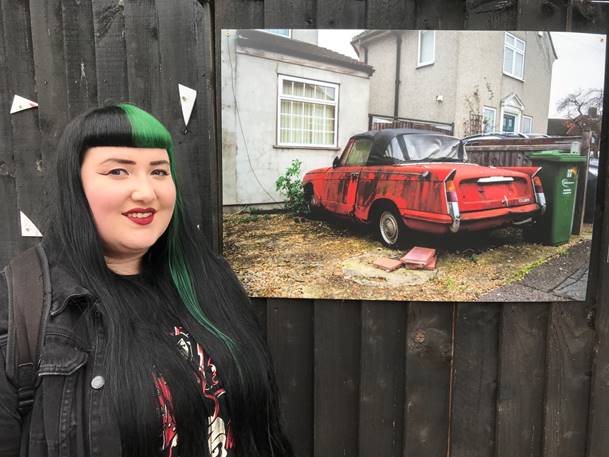Centenary of Britain’s biggest council estate celebrated in photos

Photography students are marking 100 years of the Becontree Estate with a public exhibition across the famous estate @BarkingCollege
The Becontree Estate is the UK’s biggest council estate and the most ambitious of the country’s interwar housing estates. It is home to around 100,000 people and was the largest in the world when it was built in 1921.
The first of 27,000 houses for returning war heroes and working families were built on the four square-mile estate in November 1921, with the ‘Garden City’ houses and iconic ‘Banjo’ closes recognised across the world.
‘Coated in trails of Wisteria’, the exhibition of work by Barking & Dagenham College’s photography students, runs from now until 31 August 2021. 100 locations have been chosen to mark each of the 100 years the estate has existed.
The work is displayed in a variety of sizes and ways including digital installations dotted right across the four square miles of the Becontree. Venuesinclude shop windows, noticeboards, lampposts, power stations, and parks.
David Bennett, Programme Leader for photography at the college explains:
“The exhibition showcases work of the community for the community. By displaying the work in shop windows we aim to bring back community cohesion and local business after a year in and out of Covid restrictions.”
Ruby Chapman, 23, BA (Hons) Photography student says:
“The opening of Dagenham’s Ford plant in 1931 created many automotive related jobs in the area and brought many cars into the Becontree Estate. 90 years after its opening, the area is still home to many car enthusiasts as can be seen through my collection of images of Becontree’s old cars scattered throughout the estate. “
The photos capture life on the Becontree Estate and many of the student photographers have grown up there themselves; 18 year old Perry Brackenbury was born on the Becontree and is one of the photographers whose work is on display: Perry, who is studying for a BTEC in photography at the College says: “The first residents had to follow strict rules, set by the council through their tenants handbook. Many rules included that front gardens had to be kept in good condition; windows must be cleaned each week, and much more. Private transportation such as cars was not popular at this time.
A century later, those rules have become less strict; there are loft extensions, non-matching windows and doors and also some front gardens have been demolished in order to make space for parking. Car ownership in the borough is up significantly and these vehicles block and snatch the views and the beauty of the estate.”
Topics explored include growing up black in Becontree, LGBTQ+ in Becontree, scrap cars, churches, pubs, allotments, front gardens, housing, movement of people, immigration and migration, energy, amongst many others.
Another BA (Hons) Photography student Jacob Schwar comments:
“It has been a very challenging yet inspiring year working on this project, with Covid lockdowns forcing me to change everything; I had to really persevere to get anything done. However, it has taught me how to adapt and continue in times of adversity and to even produce some of my best work yet.”











Responses